JACINTHE RIVARD | AN EXCLUSIVE INTERVIEW
NOSTALGIC REALISM
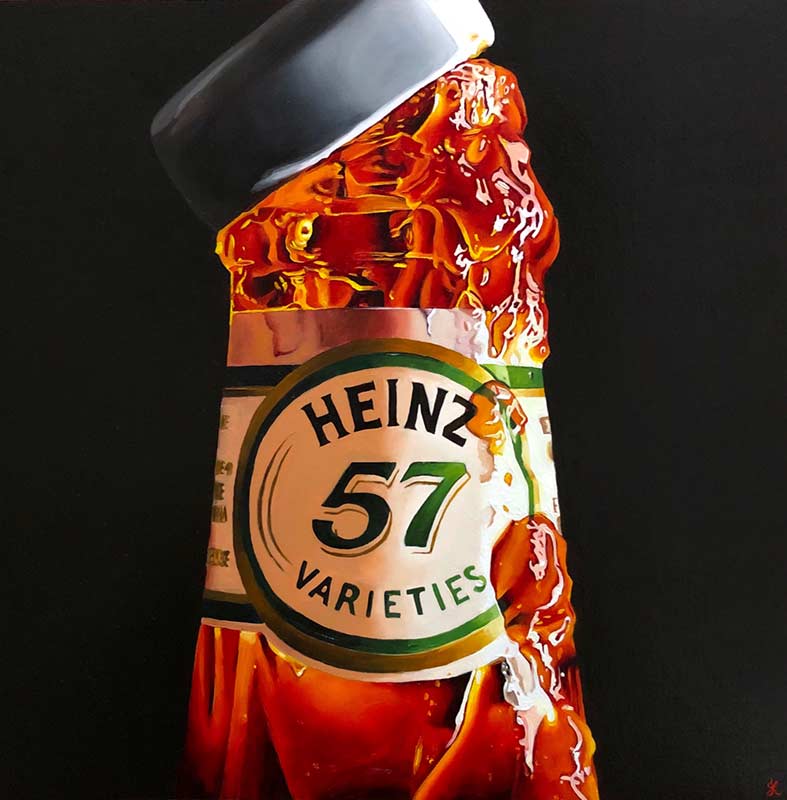
“A bottle of Coke is a bottle of Coke, but put it under a spotlight, and it becomes a star!” – Jacinthe Rivard

A native of Montreal, Jacinthe Rivard resides in Saint-Lazare, after living for many years in Vaudreuil-Dorion. Jacinthe Rivard paints everyday objects, those of our daily life, those that inspire her, and above all, shine. Her muse is light, the one reflected in glass, metal, or even simple plastic packaging.
No need for divine revelation to make the artist want to paint or ascribe existential meaning to his creations. Only spontaneity and envy guide her. In her creative process, Jacinthe is also a photographer. She loves playing with her camera and light effects, knowing that a beautiful photo will always become a beautiful painting.
From her point of view, life is too short and her list too long. Her paintings are sold mainly in Canada and The United States, also internationally in several galleries and art fairs. Jacinthe also accepts commissions if the subject inspires her.
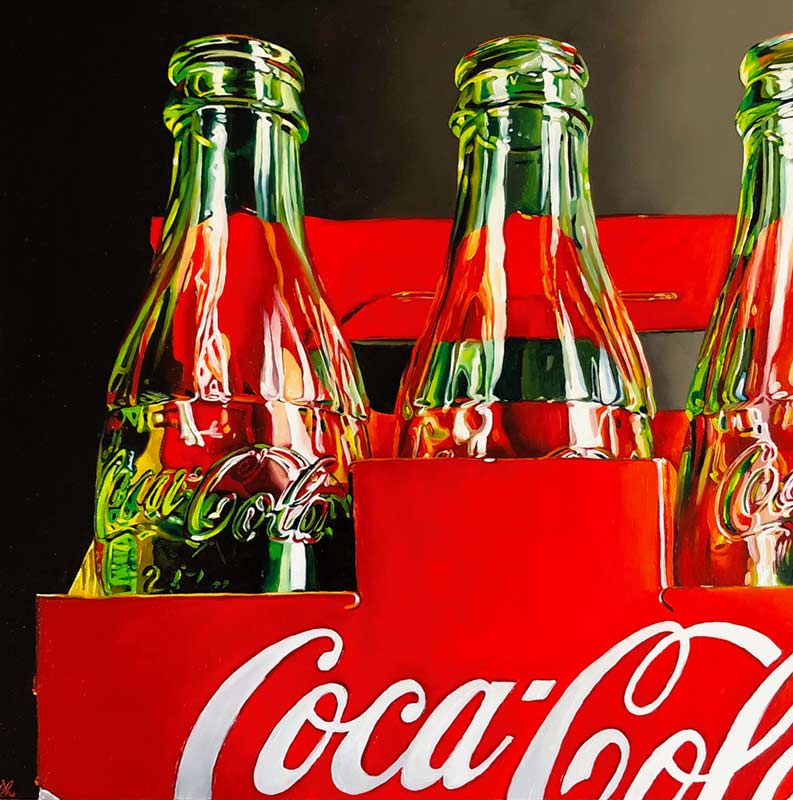
Art Market Magazine: Thank you, Jacinthe, for having an interview with Art Market Magazine. We were very impressed by your work’s quality, with a very high realistic technique, mainly with painting transparent glass, plastic, and other materials where the light is reflected so clearly.
So let’s start from the beginning. Can you tell our readers about your background in painting? Did you grow up in an artistic family?
Jacinthe Rivard: Thank you! It’s a pleasure having this interview.
I have always been artistic for as long as I can remember. As a kid, I remember my father bringing home the stacks of reports from his job, you know, the ones that used to be folded like an accordion with holes all along the edges. Well, I would use those to create hundreds of masterpieces in watercolors. I was always good at reproducing what I saw. I would create from my imagination, but I always came back to realistic subjects. It was always what I enjoyed the most.
I studied fashion design because I figured it would be a career where I could draw and be creative, but it wasn’t what I thought it would be…
I didn’t anticipate all the sewing! I hate sewing! So in 2012, I decided painting was what I wanted to do with my life. I started painting every day. It’s incredible how practice can make you grow.
I did it by myself—no art teachers. I just did it until I figured it out. I don’t know, but I think I might have invented a new painting technique, hahaha! So I started posting my art on online galleries, and luckily for me, I got a lot of positive responses, and I started selling every painting I made.
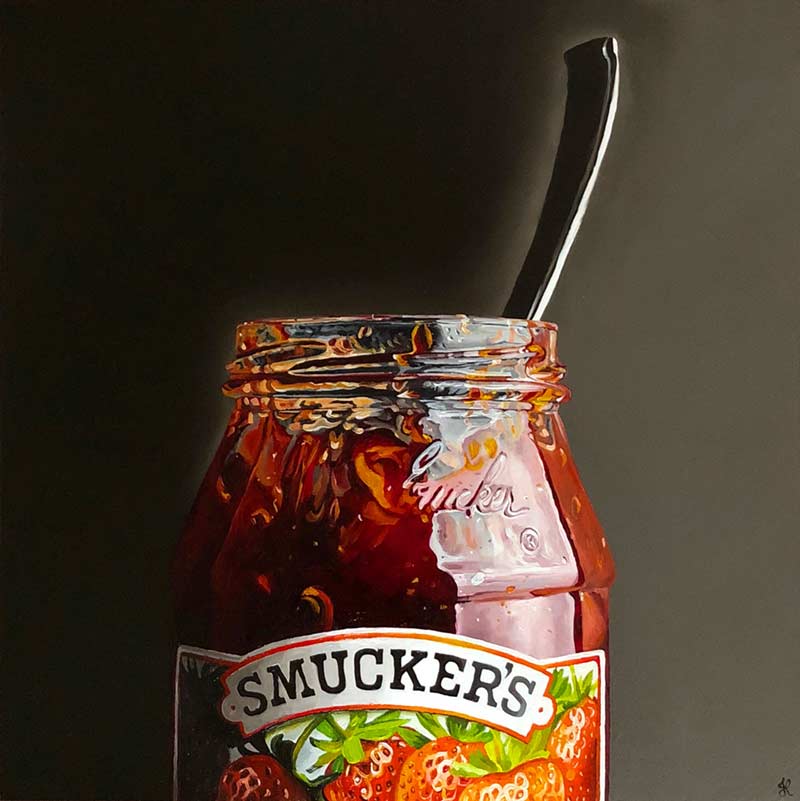
A.M.: Many artists are trying to accomplish such a high realistic technique, but for you, it seems it’s coming quickly and naturally. How did you gain such an impressive high technique?
J.R.: I wish I had a clear answer. I basically just do it. I see the color I need to mix, and I mix it. I see the spot where I need to put down that color, and I put it. Maybe I see things differently than most people? More clearly? I don’t know.
As I said before, I figured it out by myself. Perhaps that’s why I was able to do it so quickly. I don’t think I paint the same way other realistic painters do. A lot of them work in layers. That seems time-consuming and hard. Don’t get me wrong, I love the results, and I admire that dedication, but it’s just not the technique that works for me. I need to work faster, and I can’t wait for things to dry… I don’t have that kind of self-control!
A.M.: What led you to choose in Still life, mainly from the 70’s objects?
J.R.: I love antiquing! I love vintage things! LOVE them. I was buying a lot of things and was starting to have trouble justifying myself to my husband. I ran out of reasons why I needed to buy a fifth rotary phone or another antique Ball Jar to go with the other 20 I already had at home. So I started painting them. Because they are the most beautiful objects and they make me happy, I soon realized they also made others happy. I love hearing a buyer say it reminds him of a loved one or a happy time in his/her life. But mostly,
I love that I get to buy more stuff! I need them for work, and my husband can’t argue with that, right?
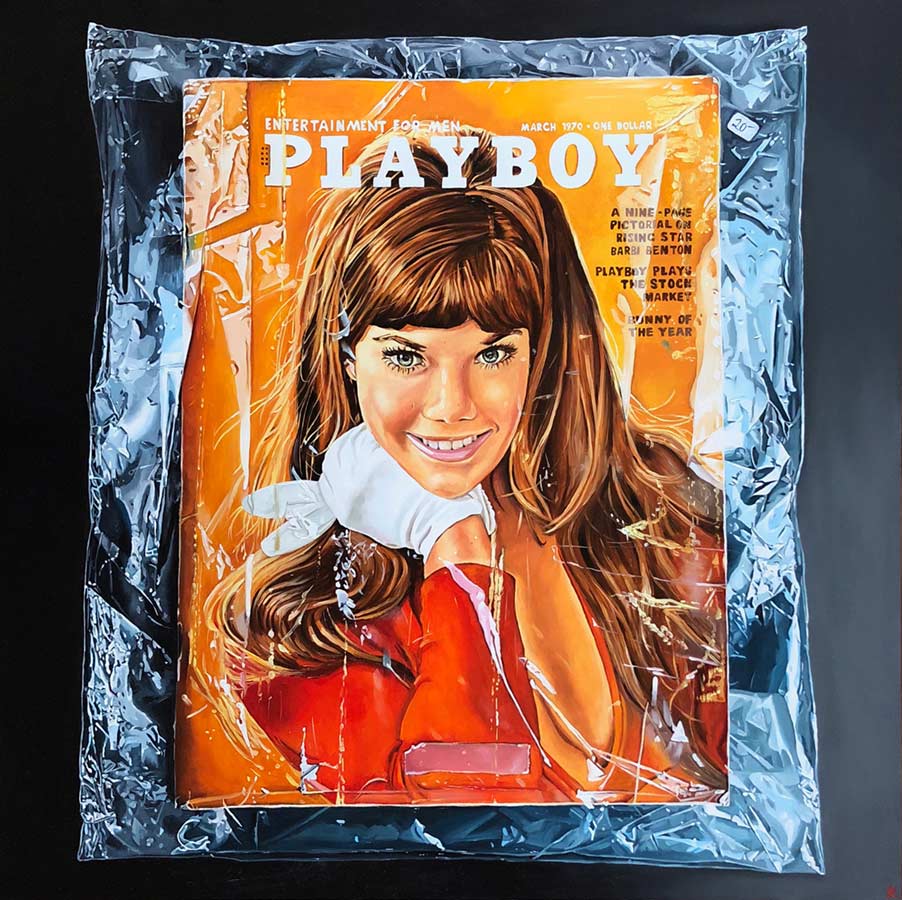
A.M.: Tell us about photography’s importance in your creativity.
J.R.: I always say my art starts with a good photo. I wouldn’t call myself a fantastic photographer. Not even close. But I can handle myself with a camera enough to begin the process for my next painting. I can spend hours trying to make donuts balance on themself or make drops of water stay on a Perrier bottle.
I used to paint portraits. Most times, all I had to work from was a picture someone had taken with an old phone, out of focus and without light. The result of the painting was reflected by the quality of the image.
Lighting on the object is critical. It changes it automatically. You can paint the same Coca-Cola Bottle one hundred times, and it will never look exactly the same as long as you change the light source. It really makes it shine! In my opinion, a good photo equals good painting.

A.M.: Your work has you focusing in a very detailed way, for hours on end, on everyday objects. What insights on reality have you gained through this constant exercise?
J.R.: Did you know there’s nothing in the world the same color as the reflection of honey on a white wall? There’s not. I’ve looked. Some artists might overlook it as a subject to paint because it has a brand printed on it. Does the label make it ugly? Not in my opinion. It makes it so much more interesting! It makes it so much more real! That jar of honey makes me want to spend my whole life trying to reproduce that shade of gold!
Everyday objects are our reality. A jar of jam is there every morning. It’s beautiful, and everyone can relate to it. I paint realistic things that make me happy. Jam makes me happy. So I paint jam. It also means I will never run out of things to paint. My fridge is full of inspiration!
A.M.: Can you recall a challenging project you worked on?
J.R.: I think every painting is a challenge, but the most recent one that gave me a run for my money was painting the cap of the Veuve Clicquot. The actual cap measures 1 inch in diameter, and I reproduced it on a 30 inches board! That was fun! Also, I’ve been working on another version of a vintage Playboy in a plastic bag since last September. I don’t know why I do this to myself. So many folds! But the results will be worth it, I think.
A.M.: How would you describe your painting style and work? (visually and emotionally)
J.R.: “Nostalgic Realism” is how I like to describe my style. My paintings have some textures to them. They look like pictures, but they look like paintings in real life because you can see the brushstrokes. There could be some parts very well blended on one painting and others where you see strokes of paint. I like the effect it gives them. People want to touch them and “feel” the artwork.

A.M.: What do you love the most about being a painter? What are the most fascinating moments in the creation and workflow?
J.R.: The best part about being a painter is that I can do what I love every day. I will always paint, and nobody can take that away from me. I can’t get fired, I don’t have to answer to anyone, everyone I love is proud of me, and I get to take my dog to work everyday! What more can I ask for? As for the most fascinating moments, they happen when I see something that will become my new painting. They also happen when I successfully mix the exact color I need. They happen when I see my paintings through the eyes of the person looking at them. Every day, those moments happen.
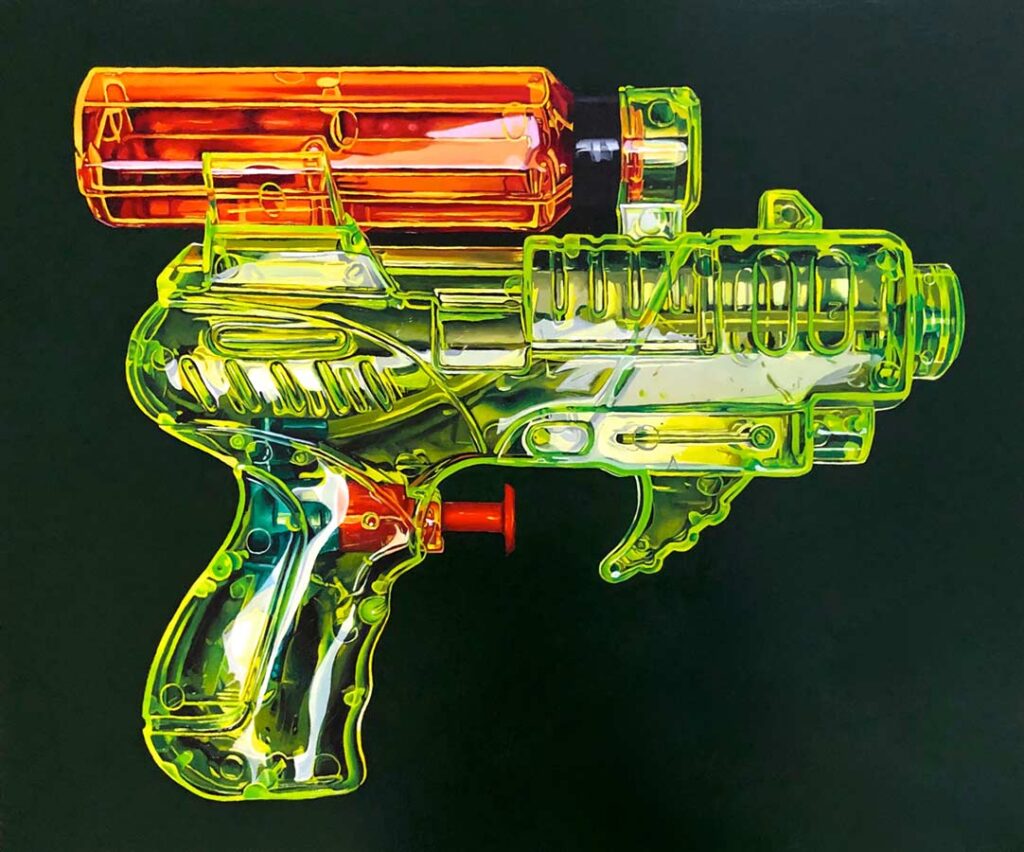
A.M.: Let’s talk about the exposure and selling aspects. You received a strong, respectful recognition at the 2019 Red Dot Miami art fair, where most of your artworks were sold.
On the other hand, you exhibit your art for sale in many galleries worldwide, and your main success is in Canada. Tell us about the route you had to take to put yourself in the position of artistic recognition?
J.R.: I am a strong believer that if you work hard and persevere at something, you will succeed. That is what I’ve done and continue to do every day.
Social media were a great help for putting the right people in my path. I feel very grateful for having a place in this artistic world.

